Write Us
We are just a call away
[ LET’S TALK AI ]
X
Discover AI-
Powered Solutions
Get ready to explore cutting-edge AI technologies that can transform your workflow!

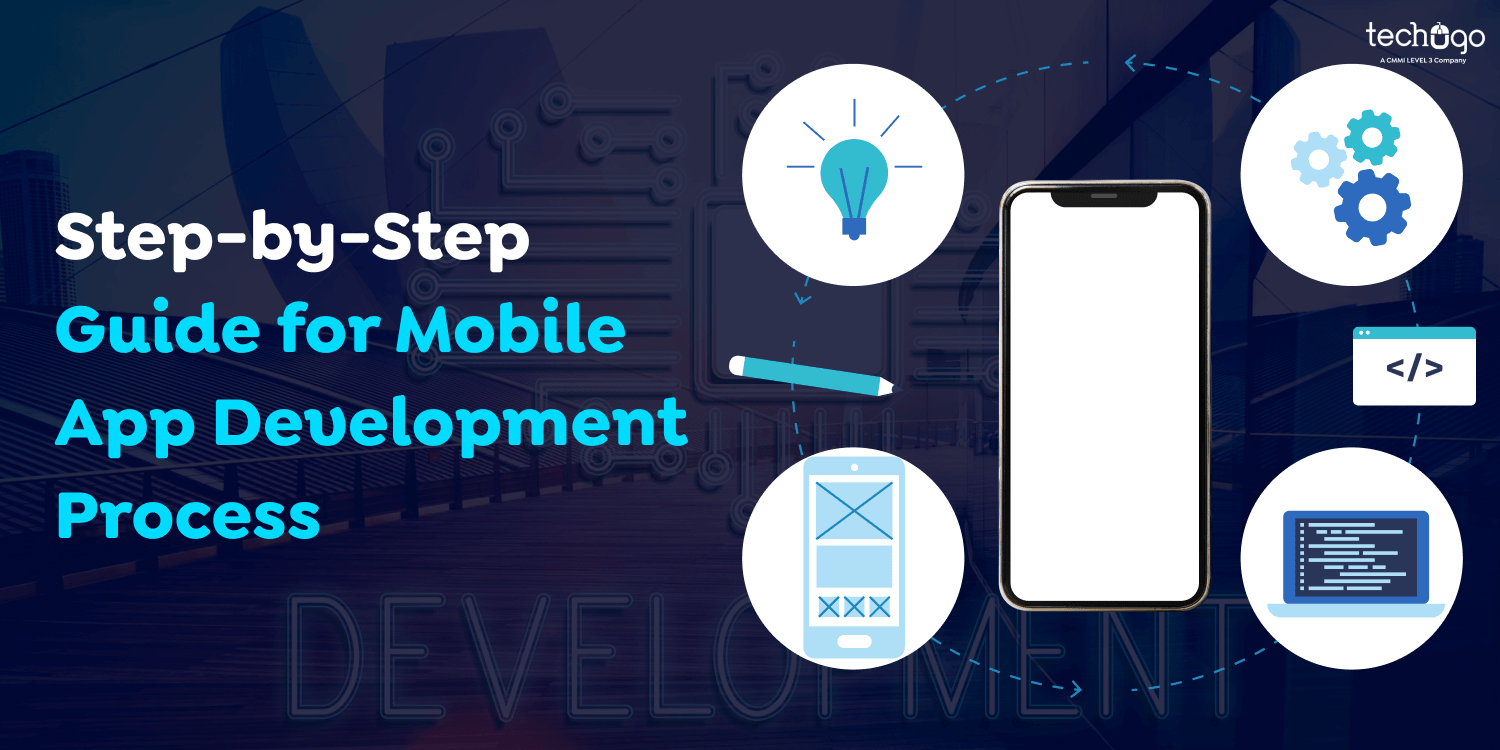
Crafting apps and seeing their impact on business growth!
Developing a mobile app involves distinct steps, including conceptualization and update release. Let’s examine the specifics of each step to help you understand what it takes to build a successful mobile app. Moreover, this blog provides a step-by-step guide to building a winning app.
Without any delay, let’s start by discussing the development phases!
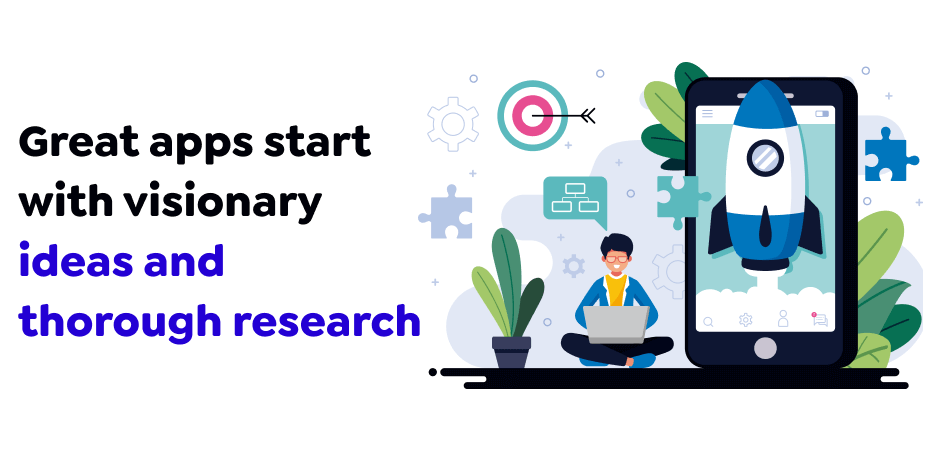
When developing any mobile app, the first thing to consider is clarifying your app concept and knowing why you are creating it. This covers understanding the primary need that the app is going to meet and how it will do so. Whether you are optimizing a company’s procedures or inventing a winning social media strategy, there should be a purpose.
It also means demarcating features corresponding to this aim: Take your main app and decide what features and options are essential and what additional ones would be good enough. For instance, an e-commerce app may incorporate payment security first, followed by product search capability, before loyalty programs.
Market research is, therefore, fundamental any time one wants to embark on an application development project. Conduct market research to answer questions about whether your idea addresses the needs and wants of the targeted audience. This is also the stage where you conclude a competitor analysis, which assists in polishing your app idea.
Example: When designing a fitness tracking app, look at top-rated apps to see how they organize users’ interfaces and incentives.
Many techniques, such as business model analysis, SWOT analysis, or PEST, can be used to analyze competitors and how your app could be unique.
As one develops an app to be accepted by the market, it is crucial to determine the demographic of the users to which to appeal. You might want to build user archetypes – hypothetical users that you have indeed derived from actual statistics. Ask yourself:
User personas must be recognized since they help design and market products. For example, an app for older adults would have less functionality and large buttons, and an app for teenagers would be more beautiful and have buttons to share on social networks.
Time-consuming: If not properly managed, extensive research and idea generation can be detrimental to product development time.
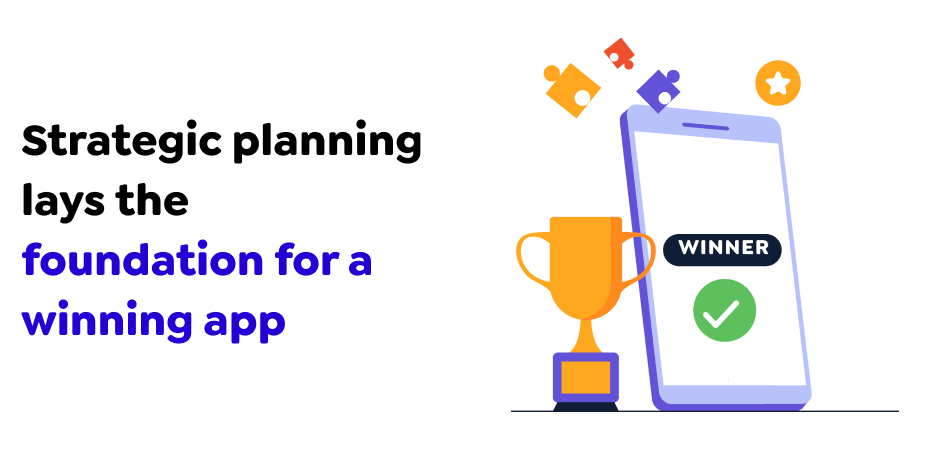
Again, it is a fact that clear and measurable goals determine your app’s success. That means before you write even a single line of code, you must make SMART goals (Specific, Measurable, Achievable, Relevant, and Time-bound). Your app’s objectives could focus on different KPIs (Key Performance Indicators) like:
Setting these goals will help you remain focused and deliver the project on schedule. They will give clear targets for evaluation and measurements. Additionally, they will offer an opportunity to evaluate the app’s efficiency after the successful completion of the project.
The kind of app you develop influences the cost, time, and performance possible. The options are Native, Hybrid, and web apps.
It depends on factors, including your pocket, the complexity level of features, and the audience it will be marketed to. On the other hand, a gamer’s high-performance app might be best served as a native app; a hybrid app, on the other hand, could very well be a limited e-commerce app.
While developing a product, it is crucial to make a proper plan that will help the team stay on the right course. The plan establishes the order in which features must be implemented, sets achievable time bounds for the project, and controls resources. The roadmap below should be flexible enough to accommodate setbacks while at the same time rigid enough to keep the team focused.
For instance, a company with an MVP (Minimum Viable Product) strategy will prioritize attributes such as login and payment interfaces over second-level features such as push notifications.
Overplanning Risks: Excessive focus on planning without taking concrete steps may harm the process and set it back on the timeline.
Now, discuss the third and most crucial phase of the development process!
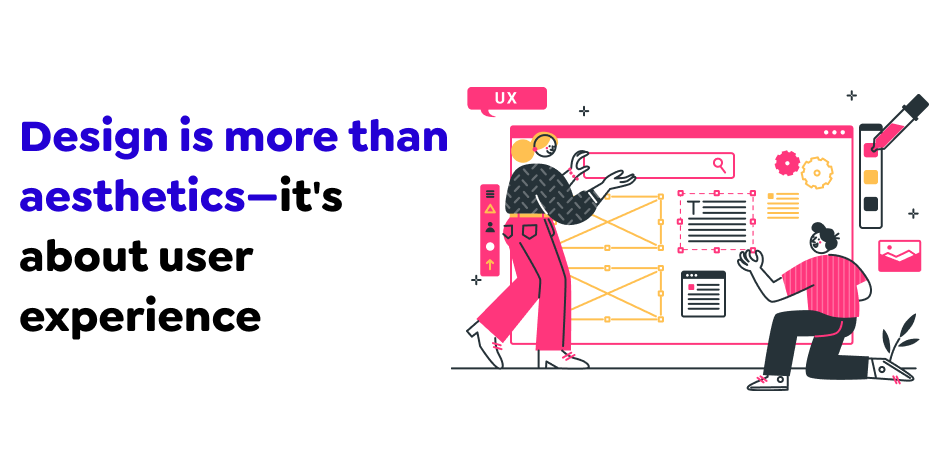
User Interface (UI) makes the application friendly and easy for the user to accomplish his goals. In this case, the main aim is to create a clear flow, thus reducing the hurdles as much as possible. Consider the following during UX design:
A good UX design can maintain users’ attention, so the chances of them deinstalling their apps will be minimal. For example, if it is a fitness app, then easy navigation is significant, and the user is not tested with more than three screens when noting down workouts.
Prototypes are designs or models that depict the application’s layout. They center on how the buttons, images, and text will be aligned without concerning the beauty they represent. This enables you to have the app’s layout and flow of the user in a particular app developed initially.
Concepts are simplified, limited working models that expose stakeholders or developers to the feel of the app before full development. Adobe XD, Sketch, or InVision are typical tools for developing clickable prototypes.
Wireframes and prototypes also eliminate misunderstandings about the actual coding progression at the point when they are most likely to occur.
That is why the UI design defines the appearance of interfaces and conforms to your brand and readability to users. Effective UI design thus enhances not only the look of the app but also its functionality. Here’s what to consider:
For example, a financial app should convey professionalism and trustworthiness through clean, minimalist design, while a gaming app can employ vibrant colors and bold fonts.
Complexity: Creating a good-looking but functional UI/UX can be difficult and require several enhancements.
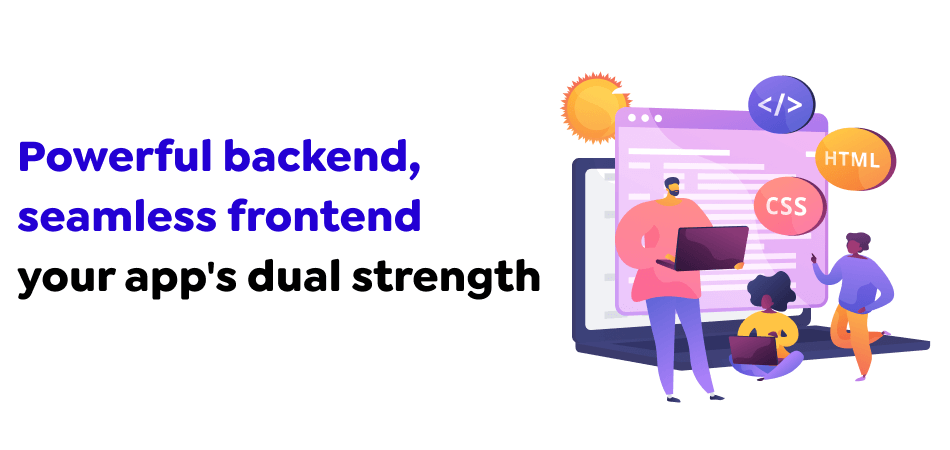
The app’s backend (server-side) and frontend (client-side) development happen concurrently but focus on different aspects.
Both need to integrate seamlessly for your app to function as intended. For example, an e-commerce app’s backend might handle inventory and payment processing, while the frontend allows users to browse and purchase products.
Choosing the right technology stack is crucial for both performance and scalability. Here are popular tech stacks based on the app type:
Native development is best for creating a high-performance app, mainly when the app includes sophisticated functionality like augmented reality or, for example, games. Hybrid frameworks are suitable for developing simple applications that will be used on manifold layers of OS.
Any mobile application follows third-party APIs, which are the process of connecting to the payment gate, including Stripe, geographical localizations, social networks, etc. This is why designing and building secure and efficient APIs is critical if communication between an application’s front and back end or with external services needs to be seamless.
For example, a ride-sharing application will need payment gateway APIs, Geo-location, and authentication services APIs.
Resource Intensive: Frontend and backend development require professional developers and usually take time.
After the development process, it is time to discuss the testing phase!
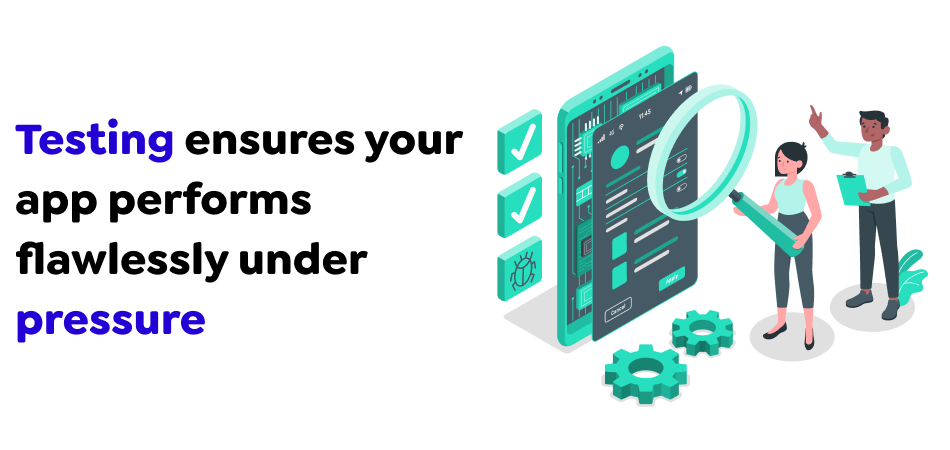
It is a critical stage in the development of mobile applications. It also helps guarantee that an app responds as planned and provides the best user experience. Different types of testing include:
Both manual and automated testing have their place in the iOS and Android app development process:
For example, in an e-commerce application, the bot can test how checkout works on different gadgets with varying operating systems, while the test human can test the general feel of the application.
Once testing uncovers bugs, they must be fixed promptly. Each bug is typically documented, prioritized based on severity, and assigned to developers for fixing. Post-bug fixes and regression testing ensure the changes don’t introduce new issues. Quality assurance (QA) teams often work with development to ensure the app meets technical and user-centric quality standards.
Time and Cost: A high level of testing can also prove costly and time-consuming, mainly if multiple forms and types of platforms are used.
How much does it cost to build a mobile app?
Contact us for inquiries related to the app development process.
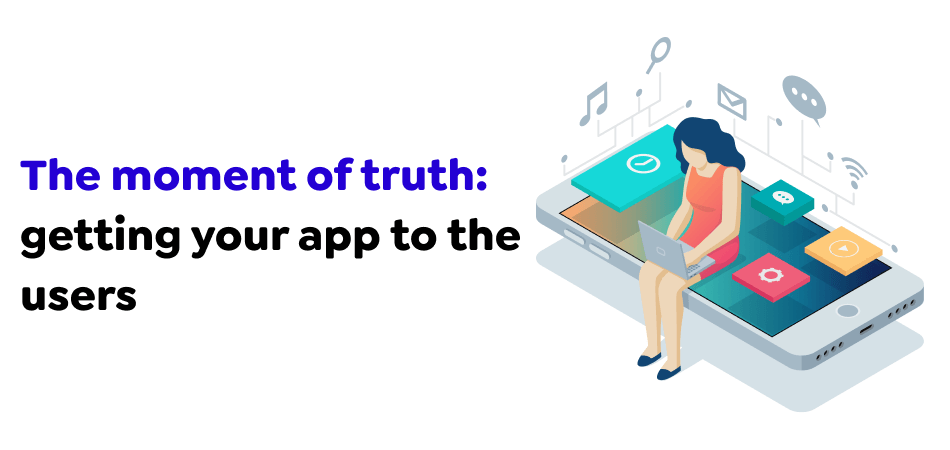
It is crucial to read through submission guidelines, especially as many applications get rejected at this stage. Ideally, app owners should always respect the App Store Human Interface Guidelines, Privacy Policies, and Technical Requirements for the Apple App Store. So, for Google Play, no actions violate users’ security and privacy and the use of their data.
Submitting your app involves preparing materials such as:
The app review process may take several days to a week, and the application might be rejected in different stores for various reasons, most often due to failure to conform to the design standards or bugs in the store.
With CI/CD, only testing, building, and deployment can be executed automatically to allow quick updates and fixes. Regarding mobile applications, CI/CD tools such as Bitrise, Jenkins, or CircleCI will assist with deploying new features or an update to production without leaving users uncomfortable.
For instance, a banking application that considers its users’ security may use a CI/CD pipeline to deploy significant security enhancements instantly once they are released.
Rejection Risks: Tight controls over application distribution can result in the app being rejected and, therefore, needing to be resubmitted for release.
Once your app is live, it’s essential to monitor its performance. Use analytics tools like Google Analytics, Firebase, or Mixpanel to gather insights into user behavior, such as:
These insights can guide future updates and help optimize the mobile app for user engagement and retention.
User feedback is invaluable in the post-launch phase. Monitor app reviews and social media channels for suggestions and incorporate them into regular updates. Successful apps, like Instagram, stay competitive by regularly introducing new features and improving usability based on user feedback.
Regular updates address bugs and align your app with changing user needs and expectations, ensuring long-term success.
Ongoing Costs: Sustaining monitoring and improvement operations demands a steady commitment of resources, which may accumulate general costs.
Connect mobile app development company for further enquiry!
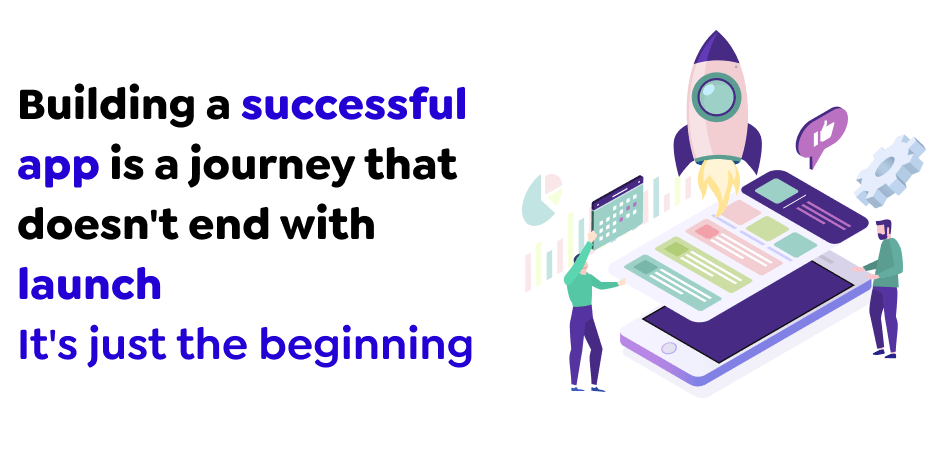
Mobile app development process is an innovative and complex method carried through many phases. By reading through this guide to its every point, you can successfully manage all the stages and create innovative apps with the support of an app development company that are not only in demand but also beloved by users. Whether or not you’re making a basic essentialism for everyday use or a highly-specialized solution for businesses, constant consideration of the user, constant striving for quality, and being ready to incorporate the new possibilities of new technologies are the keys to success.
Get in touch with Techugo to know more!
Write Us
sales@techugo.comOr fill this form